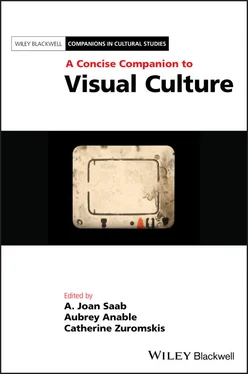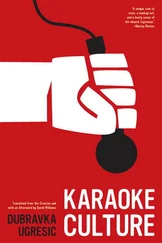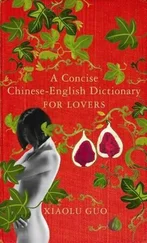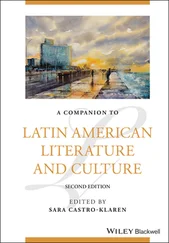Richard Meyer
JONRereading “At Home in Marginal Domains” (Meyer 2000), the question of yours that jumped out at me was how, if at all, spaces of queer sexuality can be rendered visible to history without betraying the secrecy and anonymity that structured those spaces to begin with. I feel like that’s very relevant now not just to how “queer” is changing, but also to how people encounter images and objects. I’m thinking of how the Internet and social media platforms like Instagram change the affect or the urgency of encounters that people have with artworks.
RICHARDThere’s a lot about sexuality that is not susceptible to visual representation or to history, but there’s also a lot of art and historical experience that can’t be divorced from sexuality. So not being able to capture something fully doesn’t mean that it’s not relevant. Visual studies attends to gender and sexuality as a dialogue between representation and what’s lost to representation, or between history and what has been lost to history. It tries to bring back certain traces or objects or art that have been overlooked, while acknowledging that retrieval is never sufficient or comprehensive.
One of the ways in which I got interested in this was through a series of nude and seminude photographs that George Platt Lynes took in 1938 of the painters and lovers Paul Cadmus and Jared French (I was writing about the censorship of Cadmus’s public paintings at the time). The photographs were among thousands of male nudes that Lynes produced privately in the 1930s and 1940s. While Lynes gained fame as a fashion, dance, and portrait photographer, his private photographic endeavors remained virtually unknown. Shortly before his death in 1955, Lynes donated many of these photographs, including the Cadmus–Lynes pictures, to Alfred Kinsey and his Institute for Sex Research in Bloomington, Indiana, where they reside to this day. Lynes’s double portrait of Cadmus and French offer what we would call today a gay male couple in a totally eroticized and eroticizing context. Although Cadmus was portraying homosexuality in his paintings, he was doing so exclusively through the stereotypical figure of the effeminate “fairy” and of a homosocial intimacy among sailors (and other conventionally masculine figures) that couldn’t be acknowledged at the time. I had to stop myself and say, Lynes’s private photographs are just as much part of history as Cadmus’s paintings. I think the emergence of visual culture studies enabled me and many other art historians to take a broader view of cultural artifacts and to resist privileging public history over private art and culture. Even if no one else saw the photographs of Cadmus and French, I know that they saw them and that Lynes, of course, did as well.
JONThat’s an audience!
RICHARDWhy shouldn’t they count as one? I’m interested in the notion that such a limited reception might also be an enactment of intimacy. There was an erotics among those three. Cadmus told me the ripped t‐shirts the couple wear in the photograph were provided by Lynes as a prop. Famously dapper, Cadmus would never have worn such a tattered shirt. All of that suggests a much more elaborate visual and erotic choreography or set of possibilities than you get if you are looking at Cadmus’s paintings..
JONAnd there was no possibility of financial success or renown from making those photographs—Lynes was more likely to face ruin or prison for making them—which I think speaks to the potency or urgency of desire, friendship, and kinship as motivating forces for making work. I think a way in which modernist art history is typically narrated is that an artist sets out to solve a specific formal problem and then tries to do so, and then another artist advances that process forward. This narrative doesn’t really account for all the messiness and everything going on in a person’s life outside the frame, which all factors into artistic life.
I just read the biography of Samuel Steward, Secret Historian (Spring 2010), and he seems like a useful figure to bring into our conversation. He wanted to be a renowned literary figure, but discovered over the decades that sex was essentially his medium or the driving force of his life. And then he embraced the degraded, maligned form of the gay pulp novel later in his life, and it was his way of finally bridging his literary pursuits with the pursuit of desire or sex. These writing gigs were very poorly paid, you gave up all your rights, the publishers were very fly‐by‐night, but they provided a platform for him that the world of modernist literature just couldn’t. I was also struck by his explanation for becoming a tattoo artist—how it allowed him a proximity to sailors and other men’s bodies, and how tattooing was a way of marking them with his handiwork, which was disseminated out in the world, circulating on their bodies. I thought this was a beautiful metaphor, or even a model for thinking of these more underground or marginal forms of art or cultural production. I think this ties in with my interest in the unrepresentability of certain aspects of sexuality and with the way they require other forms in order to be legible.
RICHARDDidn’t he have some kind of mural over this bed?
JONThat’s something else I was going to bring up—how art is produced as a form of seduction. Initially he had a mural he made himself of a sailor and a “floozy” above his bed, and then at a certain moment he replaced it with one of two men “in a moment of post‐coital relaxation” (Spring 2010, 168). And I thought that was fascinating, because he was very suspicious of gay liberation and of the new visibility of gay culture and the gay couple in particular. But that historical transition is registered right there, in his bedroom.
RICHARDOne of the things Cadmus said to me, I think in our first conversation, is that he really disliked gay pride parades because, for him, pride was a bad thing, in fact a deadly sin. (He actually painted grotesque personifications of the seven deadly sins in the 1940s.) Even in the sense of being proud versus being ashamed, it just didn’t make sense to him for homosexuality to be either one or the other of those things. And pride was this over‐inflation of the self.
JONAnd now pride is a whole month.
RICHARDWhat started as the anniversary of a riot, the Christopher Street Gay Liberation Day Parade, has now become a celebration rather than a call for liberation. Not that there isn’t a lot of politics going on in pride parades but there is also a great deal of corporate sponsorship and commodification. To the gay liberationists of the early 1970s, many of whom were avowedly anti‐capitalist, it would have been unimaginable that large corporations could publicly cash in on something called “the gay community.”
Turning back to Steward for a moment, when we say sexual experiences can’t be fully captured by representation, in many cases (such as his) we wouldn’t have access to these representations at all if private diaries, records of sexual encounters, and pictures had not been created and preserved for later audiences.
JON That was his masterpiece, basically: his card catalogue of all his sexual encounters.
RICHARDThere has to be someone who values—even if it’s not valued in its moment—there has to be someone later who recognizes that there is not only historical but also creative value in this and that, if it’s retrieved in the right way, it will be meaningful to all these people who wouldn’t otherwise have access to it. And that’s hopefully where we come in. We can recognize that there is meaning that hasn’t yet been offered to others, and maybe we can be part of how that meaning is established. I’ve always been interested in putting materials such as physique magazines and wheat‐pasted posters in conversation with high art. Or rather I’ve been interested in the fact that such objects have sometimes been in conversation with high art but in ways that couldn’t be acknowledged at the time and often have not been since. The way people, including artists, live their lives may involve very different domains of cultural production. Visual culture studies helps us retrieve some of the domains that have been lost or looked right past.
Читать дальше












